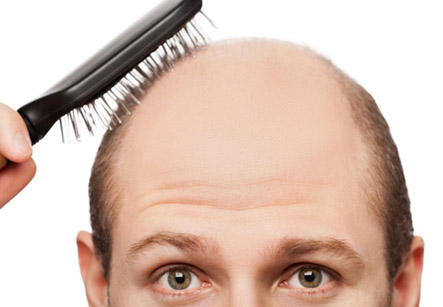Hair Loss Men
Introduction
Male hair loss is the most common type of hair loss.
It is caused by increased sensitivity to male sex hormones, also called as androgens, in certain parts of the scalp, and is passed on from generation to generation.
In the past, baldness was often seen as something unfortunate. However, this attitude has changed over the years and nowadays a clean-shaven head is usually considered both fashionable and attractive.
Causes of male hair loss:
Some men have areas on the scalp which are very sensitive to the male sex hormones that circulate in men’s blood.
The hormones make the hair follicles (from which hair grows) shrink. Eventually, they become so small that they cannot replace lost hairs. Some follicles are still alive, but are no longer able to perform their task to grow hair.
The condition usually starts in men aged 20 to 30 and follows a typical pattern.
We have all the information you need about public and private Cosmetic / Plastic clinics that provide Hair Loss Treatment in Iran, Islamic Republic Of with the best quality and lowest possible price

Initially, a receding hairline develops and gradually the hair on top of the head also begins to thin.
Eventually, the two balding areas meet to form a typical U-shape around the back and sides of the head. The remaining hair is often finer and does not grow as quickly as it used to.
Prevention of male hair loss:
Male hair loss is genetically determined which passes on from parents). Although a doctor can offer medical treatment to improve the condition, this may have side effects.
Male hair loss affects a large part of the male population and people react very differently to it. It is important to try to accept hair loss for being something natural.
Rather than trying to camouflage bald spots with remaining hair or a wig, it is probably a better idea to leave your hair as it is, or shave it off completely.
If, however, the patient decides to try to regain the hair, possible medical treatments are discussed below.
Treatment:
Baldness is generally regarded as natural, and not a disease.
So if a person decides they wish to try to get their hair back, they will probably have to pay for the lengthy, expensive procedure themselves.
Treatment with medication:
• Minoxidil lotion is applied twice daily to the scalp. Minoxidil was originally invented as a treatment for high blood pressure. The hair growth is a side effect of the medicine that, in this case, has proved useful. It can be prescribed by the doctor, but can be purchased over-the-counter. About 60 per cent of patients benefit from it to varying degrees and its effects start to wear off as soon as it is stopped.
• Finasteride is a medicine taken in tablet form which partially blocks the effects of the male hormones (an ‘anti-androgen’). It is used in a higher dose to reduce the size of the prostate gland in men with benign prostatic hypertrophy. This medication has been shown to halt further hair loss and promote re-growth of scalp hair in about 80 per cent of patients after three to six months. Treatment must be continued to sustain the improvement in hair growth. It is only available on prescription.
Plastic surgery:
Plastic surgery may be the only reliable way to replace loss of hair, and techniques for restoring hair growth are constantly improving. These include:
Initially, a receding hairline develops and gradually the hair on top of the head also begins to thin.
A transplant: The surgeon moves non-sensitive hairs from the back of the head to the top. This is best for men in whom hair loss is limited to the front of the scalp. Factors that determine whether a person is a suitable candidate include age, hair color, the nature of hair loss, and whether the hair type is straight or curly.
Scalp reduction: This technique is most suitable for men with a small, well-defined bald spot on the top of the head.
Flap-surgery: This surgery involves making the part of the scalp that still contains hair larger. This is done for cases of hair loss over a small area.